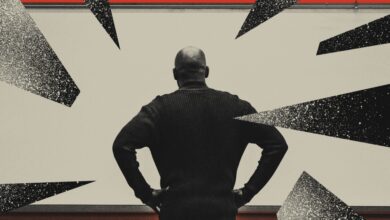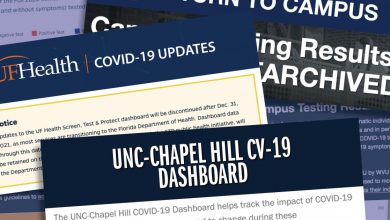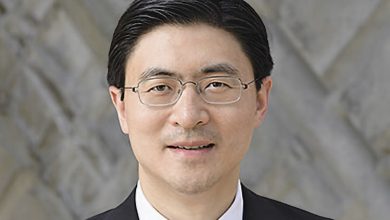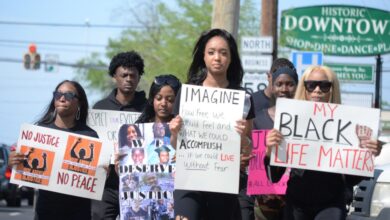A Student on the Edge
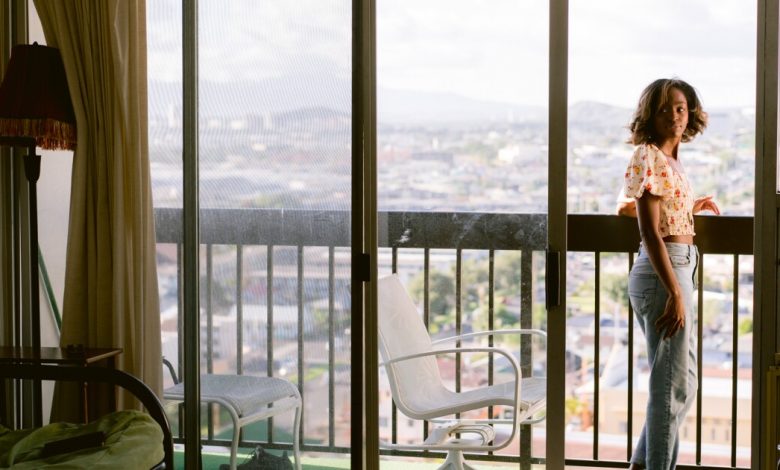
[ad_1]
That’s when she started running into new symptoms: a clenching, nervy pain in her head, neck, and chest. A strange slowness to her thoughts. She would lose what she was saying midsentence while giving presentations. Words would slip her mind.
Like many others who have encountered the coronavirus, she had been left with lingering symptoms, part of a newly described syndrome sometimes called long-haul Covid.
Even before the pandemic, Trice was often overwhelmed by all she had to do. She was a multimedia-cinematic-production major, and landed production-assistant positions in movies and shows like Hawaii Five-0, Magnum P.I., and Godzilla vs. Kong. This meant grueling 12-hour days, and she built her class schedule around them.
When the pandemic temporarily shut down productions, she did freelance graphic design and started conceiving her own show — an important step, she thought, to achieving her dream of becoming a producer. Her hero was Shonda Rhimes, the creator of Scandal and Grey’s Anatomy, which Trice used to watch as a kid, sitting between her mother’s legs while her mom did her hair.
As a Pell Grant recipient responsible for paying her own way through college, cutting back on work never seemed like a good option. But her bout of Covid-19 made her rethink her hectic schedule. “If I couldn’t stop when I had a deadly virus,” she said, “what would be my final impetus to stop?”
Maybe college would be the best thing to pause.
The pandemic has been hard on everyone. Two years of flip-flopping instruction and long stretches in quarantine are no one’s idea of the residential-college experience. For students like Trice who already face barriers to completing college, the disruptions can be a threat to getting their degrees.
College students nationwide have felt the strain of the pandemic. The number of first-time college students who earned their degrees has been rising steadily for years, but stalled in 2019-20, according to data from the National Student Clearinghouse Research Center. (It rose again in 2020-21.) Among the students who started college in fall 2019, the fraction who persisted to fall 2020 fell by two percentage points, the greatest one-year drop since the center started tracking a decade ago. Among that group, historic gaps in persistence by race continued: About 65 percent of students who were Black, like Trice, stayed in college to their second year, compared to 79 percent of white students and 87 percent of students of Asian descent.
A fundamental task of higher education is to guide students to the degrees that, in aggregate, lead to better lives. Covid-19 has made that task harder. A semester in Trice’s shoes illustrates how. Thousands of students like her are weathering forces as small as a hard-drive crash and as large as a pandemic. Trice’s story shows how easy it is, in 2022, to flirt with the possibility of leaving college altogether. What do colleges owe students who are dealing with steeper challenges than ever, including a brand-new syndrome whose effects may persist even when campus life is back to normal?
Thus Trice started the fall-2021 semester with a full course load, several work projects, a pre-existing cognitive condition for which she was receiving accommodations, plus a new condition that impeded her ability to think and analyze, the very skills that people come to college to hone.
The tidal pull of stopping college had never been stronger.

Michelle Mishina Kunz for The Chronicle
Her accomplishments came despite her neurological condition, which was diagnosed at the time as bipolar disorder. Later, because of her long-Covid symptoms, she underwent a brain scan that revealed she actually had damage from concussions she had received from everyday accidents — wiping out on a stone kitchen floor because she was wearing slippery socks, crashing an electric scooter — years before.
Both of her parents had master’s degrees, and emphasized the importance of education. “It has been framed to me as the key to success,” she said. After they divorced, her mom told her good grades would be more important than ever. Her dad was not helping pay for college, and Trice would need to get grants and loans. She applied to an Excel spreadsheet’s worth of scholarships. “I was, like, not throwing away my shot,” she said. (She loved Hamilton.)
She chose Hawaii Pacific because she wanted a dedicated film program near the West Coast, and she had a family history in Hawaii. Her paternal grandparents moved there in the ’80s, and her parents met there. Her mom went to Hawaii Pacific for undergrad, then the University of Hawaii for her master’s in public administration.
Four years in, Trice was still grateful for how Hawaii Pacific helped her get her foot in the door in a cutthroat industry. It was her adviser, Peter Britos, an associate professor and program chair for cinematic multimedia arts, who first sent out word of the opportunities on Godzilla vs. Kong. Hawaii’s entertainment scene is small, and Trice’s reputation for hard work soon kept the offers coming.
Being on set taught her another reason to pursue a degree. She was often one of the only Black women there. In the industry, “there’s not a lot of spaces created for us,” she said. “Unless I have this degree to back up my intelligence, my skills, I’ll never get the respect of my co-workers or my boss.”
It was important for her to graduate quickly as well. She depended on several institutional and outside scholarships, and she wasn’t sure they would cover her beyond four years. She was anxious not to take on large loans.
At the same time, because the jobs were a sign she was getting somewhere in the industry, she sometimes prioritized them over school. Her mom didn’t seem to mind. Even as K. Lynn Trice had stressed the value of an education, she believed in her daughter’s ability to reach her dreams, whatever path she took.
Britos advised Olivia to focus on finishing her education, and she took steps in that direction, getting a more low-key on-campus job while continuing to freelance.
Then Covid hit.

Michelle Mishina Kunz for The Chronicle
One of the pandemic’s many legacies will be long-haul Covid, which includes symptoms that last four weeks or more after a coronavirus infection, according to the Centers for Disease Control and Prevention. The condition can affect even those who had mild or asymptomatic infections. Common signs include shortness of breath, fatigue, and difficulty concentrating. Some patients have reported having long Covid for a year or more.
It’s not known what proportion of people who are infected with the coronavirus go on to develop long Covid. Estimates vary so widely, it suggests there’s much that science doesn’t yet understand about the syndrome.
Campuses that reported high case counts have seen limited but distinct evidence that long Covid is weighing down some students. In November 2021, before scientists detected the Omicron variant in the U.S., The Chronicle surveyed 15 large campuses. Nine responded, seven of which said they saw at least one student request accommodations for post-Covid symptoms. Three had more than a dozen.
Among them, Texas A&M University had the most detailed data to share. As of February 2022, student-health services has seen 67 students for some kind of post-Covid condition, Martha C. Dannenbaum, the student-health director, wrote in an email. She expected more to come. “As we learn more about long Covid (signs, symptoms, diagnostic criteria),” she wrote, “these numbers will likely increase.”
Long Covid, with its brain fog and fatigue, can make it especially hard to learn. And to the extent that Covid more frequently infects vulnerable people, long-haul will disproportionately affect those, too, who already face barriers to persisting in college — less-wealthy students, underrepresented minority students, students with disabilities.
To deal with her new reality, Trice cut back on the PA work, but she still took on freelance assignments and acted as an extra in Amazon’s reboot of I Know What You Did Last Summer.
By August 2021, she had already made it through the spring-2021 semester with long Covid. She started the 2021-22 school year feeling a mix of dark and light. She was still in pain, but school gave her an outlet to express her struggles.
She was taking four courses and an independent study. In the classes, she would be producing assignments that were pieces of her final, capstone project: an experimental, personal documentary about her own brain health.
“I’m, like, at the finish line,” she said, three weeks into the semester. “I can see graduation right across the way.” Plus, the moments of brain fog seemed to be going away faster than they used to.
Halfway through the term, the classes and deadlines intensified. It was exciting but also scary. The stress seemed to worsen Trice’s nerve pain. Sometimes it was unclear what was long Covid and what were symptoms of her concussive damage, which could also make it hard for her to control her emotions and respond calmly to setbacks.
She was undergoing a new treatment, repetitive transcranial magnetic stimulation, or rTMS. Every day for five weeks, she went to a doctor to have an electromagnetic coil placed on her head, which delivered low-level magnetic currents to different areas of her brain. The treatment helped in the long run, but could make it hard to focus if she had to go to class immediately after. Plus, with the doctor’s office an hour away from campus by bus, it was another demand on her time in her already-full semester.
When she felt bad, she missed some classes. It didn’t help that she had to attend class mostly in person. Last semester, when she didn’t feel well, she could sign on virtually, but often that option wasn’t available this term. She considered dropping a class again.
In early November, she had a graduation audit with Britos. She was on track to walk in May, so long as she completed this semester’s classes, took a full load in spring 2022, and took summer classes to finish some final, stray credits. Britos urged her to hang in there.
“As a parent, one of the things I know and was always concerned about was, you take time off, you may never come back,” he later told The Chronicle. He tried to imagine what he would want someone to say to his daughters, to his son. By their third and fourth years, students have invested so much into their degrees. It was worth it to do their best to see the investment through, he thought.
“Olivia — and this is typical — she’s like, ‘Steve Jobs, Bill Gates.’ They list all the ones that didn’t need a college degree,” he said. “That’s great. I don’t want to rule out that you can have that kind of trajectory. However, the baccalaureate degree, like the high-school degree before, breaks all kinds of glass ceilings that you don’t even see unless you don’t have it.” Often, he counseled students to get their master’s.
But for a student with so much to juggle, that kind of thinking didn’t mean much compared to the chaos of everyday life.
Days after the audit, Trice’s hard drive crashed, deleting all of the work she’d done as an undergrad. Maybe I won’t graduate on time. But then most of the drive turned out to be recoverable — for a $1,300 fee. One of Trice’s freelance clients lent her the money. Maybe I will. In the days before Thanksgiving, Trice stayed up into the night editing her personal documentary, finishing, at last, a long video sequence showing her doing aerial yoga, her main source of stress relief those days. The yoga was cut with scenes of her undergoing her magnetic brain treatment, underscoring all she had to deal with, as well as her path to healing.
She had often pulled all-nighters in high school and college. Her symptoms meant this one required more breaks than usual, but she downed green tea and pressed on. “At this point academics seems like a do or fail situation,” she said in a text message. “So now it’s just time to do.”
On December 17, she texted The Chronicle a photo of her computer screen, open to her academic file. She had one A- and four A’s.
“I made deans list :)” she texted.

Michelle Mishina Kunz/Michelle Mishina
In early January, days before spring classes started at Hawaii Pacific, Trice’s cousin, Elizabeth A. Hornbuckle, died suddenly, from an unexpected health issue not related to Covid. As a kid, Trice used to spend school breaks with Hornbuckle and her family in Murray, Ky. The cousins would play video games and entertain the kids at the day care their grandparents ran. Until her half brothers were born, Trice was an only child, and the Hornbuckles made her feel like “a bonus sibling.” Elizabeth was 19 and had a fiancé and a baby boy.
Trice’s dad gave her money to buy the first one-way plane ticket she could find to Nashville, the nearest big city to Murray.
Trice helped to plan Hornbuckle’s funeral. She created a memorial video using skills she learned in college. Her cousin had been wearing her hair naturally in recent years, and Trice liked to think she was Hornbuckle’s inspiration. But nobody at the funeral home, which was staffed by white people, knew how to style it. Some in Hornbuckle’s family suggested a wig, since she’d worn them before. Trice wouldn’t stand for it. Against her family’s advice, Trice and her mother, Lynn, volunteered to do Hornbuckle’s hair and makeup.
They had to do it in a vast, industrial-looking workroom. There was a cloth-covered box in the corner, which Trice at first was convinced held another body. She wept, and then she got to work, twisting Hornbuckle’s hair so that it would hold curls the next day.
Trice’s first day of class was the next day, so she emailed the accessibility office, where staffers told her to contact her instructors. Her professors had bad news. As of fall 2021, the university was no longer offering hybrid synchronous online classes.
“I find that extremely dumbfounding,” she said. “I don’t understand why, especially during this uptick in Covid cases, that they are insistent on in-person classes.”

Michelle Mishina Kunz for The Chronicle
Like many other small, private, residential colleges, Hawaii Pacific has struggled with enrollment declines in recent years. In fall 2014, it enrolled about 5,800 students. By 2019, it had about 4,200. WASC Senior College and University Commission is Hawaii Pacific’s accreditor, and in its last letter to the university, dated February 2020, the agency described “significant administrative turnover and reductions in faculty [and] staff,” “financial instability,” and “major enrollment declines and issues of retention.”
For the class of students that began in 2014, Hawaii Pacific’s six-year graduation rate was 46 percent, much lower than the national rate of 68 percent for private nonprofit institutions. The completion rate for that cohort’s Black students was worse, 22 percent, compared to the national average of 43 percent for private colleges. Both Jennifer E. Walsh, Hawaii Pacific’s provost, and Jamienne S. Studley, WSCUC’s president, noted that because the absolute number of Black students that Hawaii Pacific enrolls is so small — historically fewer than 20 per class — just a few departures can steeply skew the numbers.
In the past, Hawaii Pacific marketed itself more to visiting students who would stay for short stints, Stephen P. Ward, vice president for communications, wrote in an email. Since then, Walsh said, “We’ve done a better job of really positioning our first-time, full-time freshman outreach to those who are serious about completing their degree program, so that we’re not just a study tourism destination.” The latest WSCUC team visit report concluded these efforts are working to increase graduation rates. The university’s absolute grad rates are now higher than the average for the WSCUC region.
But supporting students during a pandemic; understanding and accommodating complex and new disabilities, such as long Covid; encouraging students on the edge to stay in school; and preventing coronavirus infections — all that takes people and money, assets that Hawaii Pacific and colleges like it would seem to be short of.
Unlike many other small colleges, however, Hawaii Pacific has seen enrollment boom during the pandemic. The freshman class increased 7 percent in fall 2020, then 52 percent in fall 2021. Walsh attributed the successes to several factors. College visits going virtual actually seemed to have helped, because families that otherwise might not have been able to come to Hawaii could now see the campus on an even playing field with colleges in the continental U.S. In addition, the university has frequently been ranked among the most diverse in America, a draw for some students. The student body includes significant numbers of people of mixed-race, Asian, and Native Hawaiian descent.
“Thankfully, the pandemic has not impacted our bottom line,” Walsh said. “Our finances have been strong. Our enrollments have been going like gangbusters, and actually, our accreditors are coming back in early February, and we’re excited to show them all that.”
Some saw growing pains with the many fresh new faces, however.
In March 2021, in a video produced by the Black Student Union, a few freshmen members shared that they had been surprised to find “diverse” didn’t mean they would have many Black peers. They said they felt uncomfortable and stared-at on campus. One advised prospective Black students not to enroll. The university disputes many of the specific claims that students make in the video, and indeed, in many cases, the students seem mistaken: for example, about the perceived predominance of white students on campus. (The largest proportion of undergraduates, 25 percent, identify as two or more races.) But the overall sentiment of the video rang true for Trice. “There’s a shared experience among Black students at HPU, where we get here and we hear a lot about pono and aloha and we are not extended the same pono and aloha,” she said, referring to the Hawaiian words for righteousness and love.
MaryLou DePondicchello, who worked in the accessibility office from 2017 until she resigned in November 2020, recalled being assigned more and more work, while budget constraints kept the university from hiring more staffers. Walsh acknowledged that surges in student demand for accessibility services “certainly have stretched us a little bit,” but said that the university bought software to help with paperwork and recently approved an additional hire.
DePondicchello recalled that some professors could be reluctant to offer Trice and other students their Americans With Disabilities Act-required accommodations, such as extended deadlines and leeway on class attendance. “I just was battling to have these students get their accommodations,” DePondicchello said. “That was one of the reasons why I left. The big reason why.”
Walsh didn’t think the problems DePondicchello encountered were widespread. “I have no doubt that over the many years she was with us, she encountered some faculty who weren’t fully educated yet on what accommodation requirements were necessary or how that process worked,” Walsh said. But: “If there were a systemic problem, I would have heard about it and definitely stepped in.”
“It was never flagged for me as a systemic issue, or my predecessor,” she said.
Halfway through her time in Kentucky, Trice texted: “I’m in a space where I’m questioning even pushing myself to be in an academic community that doesn’t truly seem to care about my well-being.”
One professor defied administrative edicts. Britos sent Trice a Zoom link for his cinematography workshop, which was the day of Elizabeth Hornbuckle’s burial. Trice signed on and introduced herself, but then was overcome by grief and had to log off.
University leaders banned Zoom classes because they believed students not in the classroom would be counted as distance learners, and most of Hawaii Pacific’s programs are accredited for in-person learning. Students who needed to be out for quarantine and isolation could watch lectures or get class materials online, but only asynchronously. Trice said that wouldn’t work for her because she found it too difficult to follow technical video-editing classes without being able to ask questions in real time.
Administrators may not have needed to take such a hard line on hybrid classes. Because of the pandemic, the Department of Education is currently allowing for flexibility around in-person programs teaching online, said Studley, of the accreditor. About Hawaii Pacific, she said, “We think there may be a misunderstanding of what they may do at this time.”
Walsh noted that university leaders had also hoped that getting students back into the classroom would improve grades, which fell during the Covid, and reduce the rate of incompleted classes, which rose. “It was really more for student learning and less about regulatory compliance,” she said. “It was about making sure that our students were getting the best education that we can possibly deliver.”
To Trice, the administrative response felt “robotic.” “It has completely become just education and academics and meeting these milestones,” she said. What about life? What about the enormous burden of death that the U.S. has borne over the past two years? The human side of things felt very far away.
In an email, Walsh suggested to Trice that if she planned to miss more than two weeks of class, then she should consider taking a leave of absence.
Trice was angry at first. She’d tried so hard. She’d emailed with administrators and professors even as she helped prepare her cousin for her funeral. She wanted to graduate on time. Her family wanted her to graduate on time. Elizabeth would want her to graduate.
But then she thought about it. She thought about it all on the long plane ride home to Hawaii.

Michelle Mishina Kunz for The Chronicle
She decided to take a leave of absence.
Sitting cross-legged on a low concrete wall at Kaka’ako Waterfront Park, overlooking the Pacific, she explained her decision.
“I was weighing the different scenarios,” she said. “Taking it full stop won out every time because I don’t want to have all these incomplete obligations. I have a lot of times where I have one foot in school, one foot in freelance, taking all these opportunities, and I don’t want to be all over the place because the more I’m all over the place, the less I’m centered and focused on my own health and well-being.”
The next day was the last for students to drop their classes and get a full tuition refund. Trice started the morning with acupuncture and cupping, a traditional Chinese medicine practice that left visible bruises on her back. At noon, she had a meeting scheduled with Britos. Not that she needed his advice. She had made her choice. “If he somehow convinces me to stay,” she said on the way to campus, “you’ll know he’s magic.”
She and Britos disappeared for an hour, then re-emerged, chatting. Trice had decided — contrary to her previous conviction — that she would take one or two classes this semester, those that are only offered in spring terms. Britos had laid out vividly for her how much longer her graduation would take if she didn’t do so.
She just needed to check with financial aid about how much it would cost.
The financial-aid department was about a half-mile walk from the main campus, in a glassy office building. Along the way, Trice talked about how much Britos had meant to her over her time at Hawaii Pacific. He was the first person ever to call her a producer.
She took a side route into the office building, winding along a small path between the reflective glass walls and plantings. Inside was a DMV-like setup of cubicles. Trice was called up quickly.
If Trice took fewer than 12 credits this semester, she would lose her institutional scholarships, a staffer explained. Did it matter if it was for a medical reason? Trice asked. She would be undergoing more magnetic brain-stimulation treatments for her concussion and long-Covid symptoms. Her doctor had suggested she take time off.
It didn’t, no. Trice had a need-based grant and a provost’s scholarship from Hawaii Pacific, and both were only for full-time students.
Her Pell Grant would be reduced, the financial-aid staffer went on. The status of her outside scholarships depended on their funders; she would have to talk to them. Only her student loans were sure to continue as usual.
So how much would she be on the hook for?
The financial-aid staffer didn’t know. She’d have to ask the business office. They could run the calculations for her.
When their conversation was over, Trice walked across the office and out the door. She didn’t want to talk to anyone else. She didn’t want to see numbers. She didn’t want to think about it anymore.
Riding in a car, driving away from campus, she tapped out her leave of absence form on her iPad. She sent it to Britos with no explanation.

Michelle Mishina Kunz for The Chronicle
Back home that night, she was more settled. Her apartment was on the 18th floor of a high rise surrounded by low buildings, and lights from the city shimmered far below. She lit a white candle and a stick of incense; she had taken some from Hornbuckle’s apartment back in Kentucky.
Her late cousin, a high-school graduate, never wanted to go to college, she said. “She found love, left Murray, had a baby. I feel like she lived a full life,” Trice said. “She really didn’t. She died way too young. But she, in a sense, experienced what she really needed in her lifetime.”
Now Trice was at a crossroads. She had arrived at decision points like this before, and had always chosen to keep to the college plan. Now she was altering it. For the first time, she was choosing what felt good.
She had plenty to do during her semester off. For one thing, she had received an offer to work again as a production assistant on the set of American Idol, which came to Honolulu for one week every year. This year the show was offering more money than ever, $220 a day, and Trice would get to work one on one with an executive producer.
She estimated her likelihood of going back to school in the fall at “75, 80 percent.”
“I do want this degree, even though I don’t 100 percent feel like I need this degree,” she said. “I do know that if I wanted to learn these things, I could. I don’t have to go to college.” She pointed to Blender, the open-source video-editing software, and how the internet is full of tutorials and textbooks.
“But I really do value my relationship with my professors,” she said. “I feel like I can go to them with any idea and they’ll help me turn it into reality.” It would feel good to have Britos, DePondicchello, and others see her walk.
In a separate interview, Britos noted that by submitting a formal leave of absence, Trice had shown she was making a deliberate, considered decision, one designed for a return. The leave of absence would hold her institutional grant and scholarship for her. This wasn’t like the students Britos had seen ghost his classes and the university, never to be heard from again.
But Trice was open to all kinds of possible endings to her story, including ones that don’t involve her university.
[ad_2]
Source link



